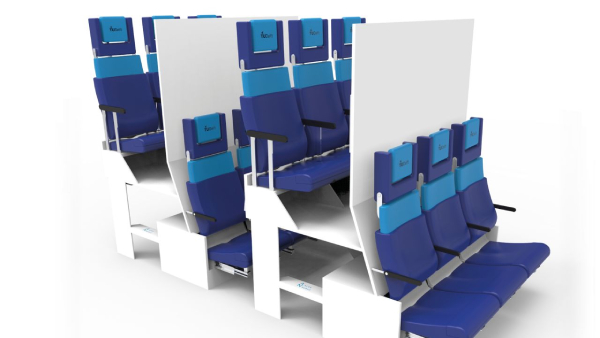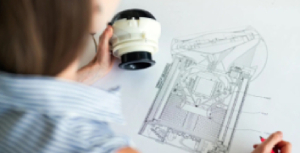
Minimalism is a philosophy rooted in simplicity, functionality, and elegance. While its principles are typically associated with interior design as well as web design, minimalism can also be applied to tangible items. In many ways, the minimalist philosophy offers a refreshing approach that resonates with consumers seeking simplicity and authenticity in the products that they use.
There are even brands and manufacturers that typically follow minimalist guidelines when designing physical products so that they, too, can create streamlined, uncluttered, and user-centric experiences. Are you perhaps aiming to do the same? In that case, make sure to work closely with a company that specialises in product design Auckland businesses trust while following these pointers:
Focus on Essential Functions
Emphasising essential functions involves designing products that fulfil their core purpose without unnecessary features or complexities. A prime example of this is the Swiss Army Knife by Victorinox, which integrates multiple tools into a compact and versatile design. Manufacturers can follow this principle by conducting thorough user research to identify core functionalities and prioritising them in the design process. By focusing on essential functions, products become more intuitive, efficient, and user-friendly.
Streamline Form and Structure

It’s essential to streamline form and structure to achieve a clean and minimalist product appearance. By eliminating unnecessary ornamentation and focusing on simplicity, products can exude elegance and sophistication. To follow this principle, product designers can employ clean lines, geometric shapes, and minimalist detailing to create visually appealing yet functional products.
Use High-Quality Materials
The use of high-quality materials enhances the durability, aesthetics, and tactile appeal of products. Making a priority of a product’s quality through the use of top-notch materials and construction methods makes the said item more resilient and environmentally friendly. The Leica M10-P digital camera embodies this principle with its premium construction featuring magnesium alloy and leather. Brands can do the same by selecting durable, sustainable materials that elevate the product's perceived value and longevity.

Ensure Durability and Longevity
That said, designing products with robust materials and construction techniques is a solid step in making sure they can stand the test of time. The Dieter Rams-designed Braun HL70 Fan Heater embodies this with its minimalist design and durable metal housing. Manufacturers and product designers can prioritise durability by selecting materials that withstand wear and tear.
In addition, they can also employ modular designs for easy repair and maintenance and consider the product's life cycle impact. Products that are designed for durability are more sustainable, resilient, and economically viable.
Optimise User Interaction
It’s not enough to focus on the product’s exterior details. To embody minimalism in their products, manufacturers must design intuitive interfaces and ergonomic forms that enhance usability. Features such as ergonomic grips, intuitive controls, and responsive feedback can improve the overall user experience. By prioritising ease of use and comfort, designers can make their products more accessible and enjoyable to use.
Create Visual Harmony by Reducing Clutter
To create visual harmony, product designers must balance proportions, shapes, and negative space to achieve a cohesive and pleasing aesthetic. Removing visual clutter and enhancing visual coherence also allows products to become more visually appealing and emotionally resonant with its users. Product designers can employ techniques such as minimalistic graphics, clean typography, and strategic use of negative space. These help clean the visual environment, which in turn makes products more visually engaging, calming, and easy to navigate.
Prioritise Function over Decoration
Prioritising function over decoration involves eliminating unnecessary embellishments that do not contribute to the product's functionality or user experience. The Braun ET66 Calculator embodies this principle with its unadorned design focused on clarity and ease of use. Brands can follow suit by removing superfluous elements such as excessive branding, decorative patterns, and non-functional adornments. The effort to prioritise simplicity and functionality makes the products more honest, authentic, and user-centric.
Embrace Minimalistic Packaging
Embracing minimalistic packaging entails using simple and sustainable materials to reduce waste and environmental impact. By minimising packaging materials, opting for recyclable or biodegradable options, and designing packaging, brands and manufacturers can reflect and stand by the product's minimalist ethos. The use of minimalist packaging, in turn, reduces the product’s environmental footprint and enhances its perceived value.
Test for Usability and Ergonomics
Testing for usability and ergonomics involves conducting rigorous evaluations to ensure that the minimalist design enhances the overall user experience. The Herman Miller Aeron Chair underwent extensive ergonomic testing to ensure optimal comfort and support for users. Designers can follow suit by conducting usability tests, ergonomic evaluations, and user feedback sessions to identify potential design flaws and refine the product accordingly.
Minimalism is a guiding principle that can transform product design by making a priority of simplicity, functionality, and authenticity. Following the steps outlined above allows manufacturers and brands like yours to create products that are not only visually appealing but also intuitive, durable, and sustainable.
Are you planning to design products that resonate with consumers seeking simplicity, authenticity, and meaningful experiences? Get in touch with Pro-Dev today so we can help you make products that can stand out in an increasingly complex and cluttered world.















































